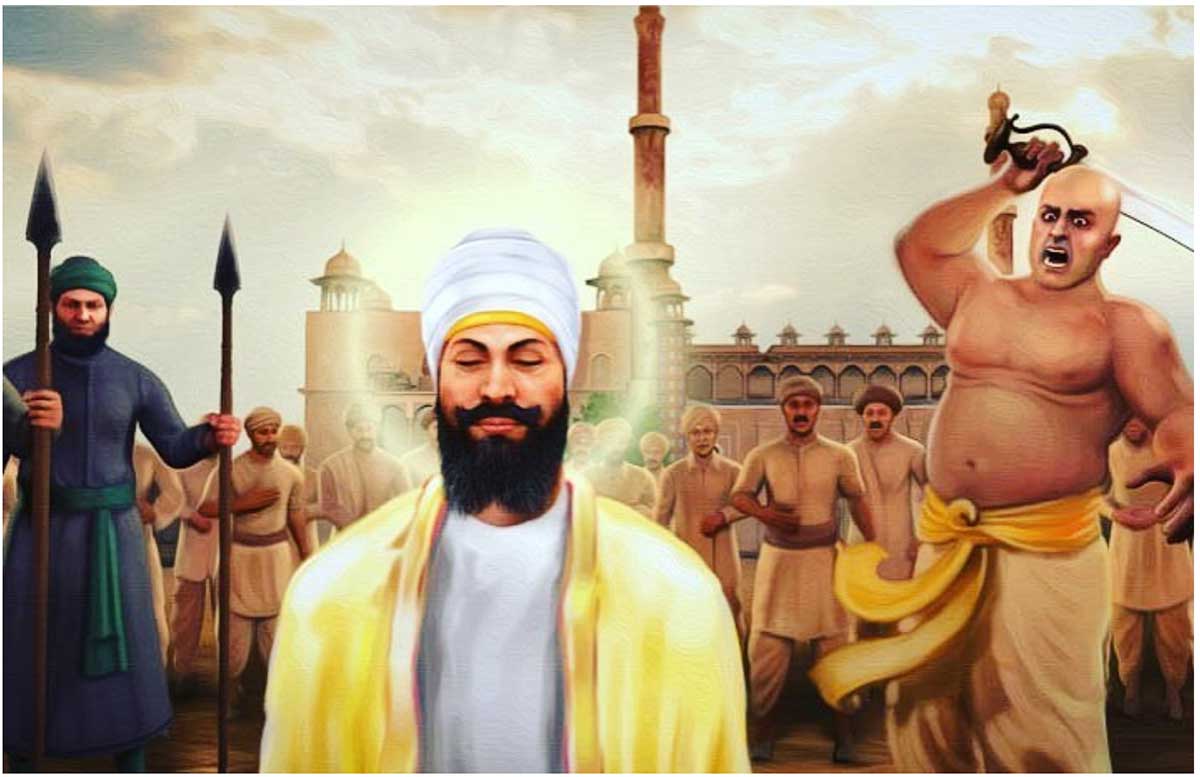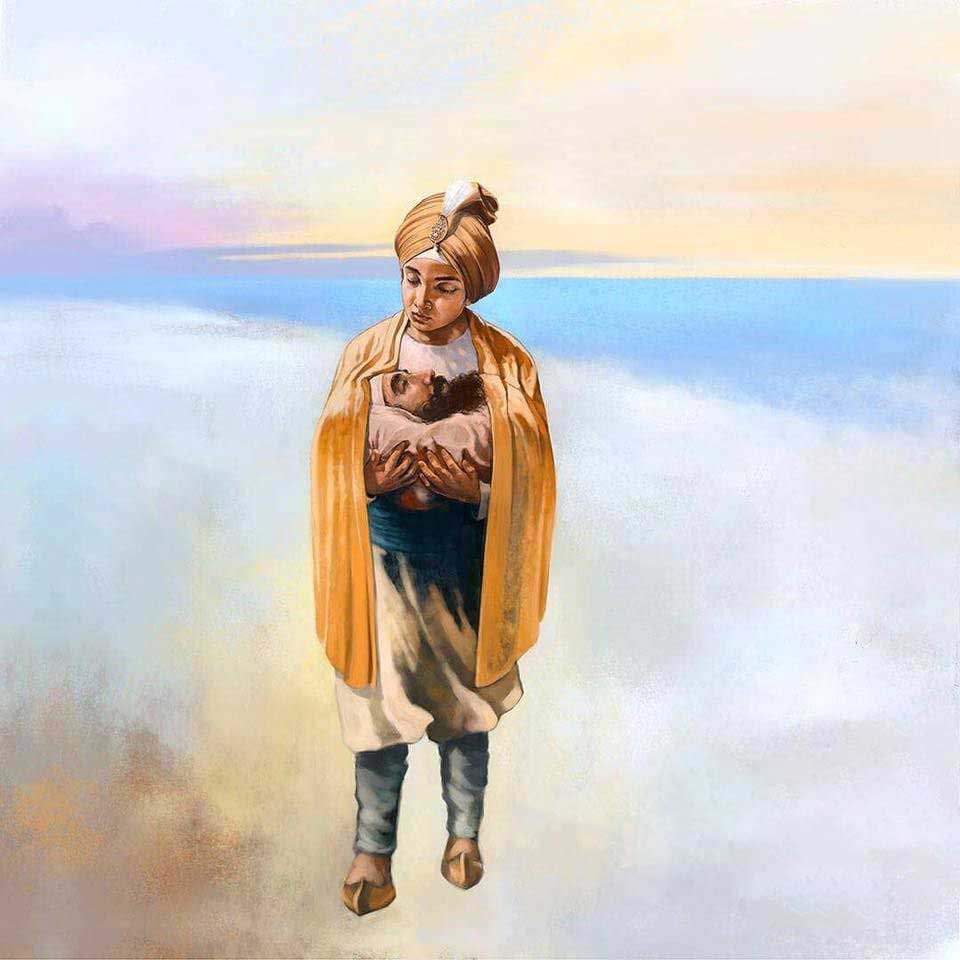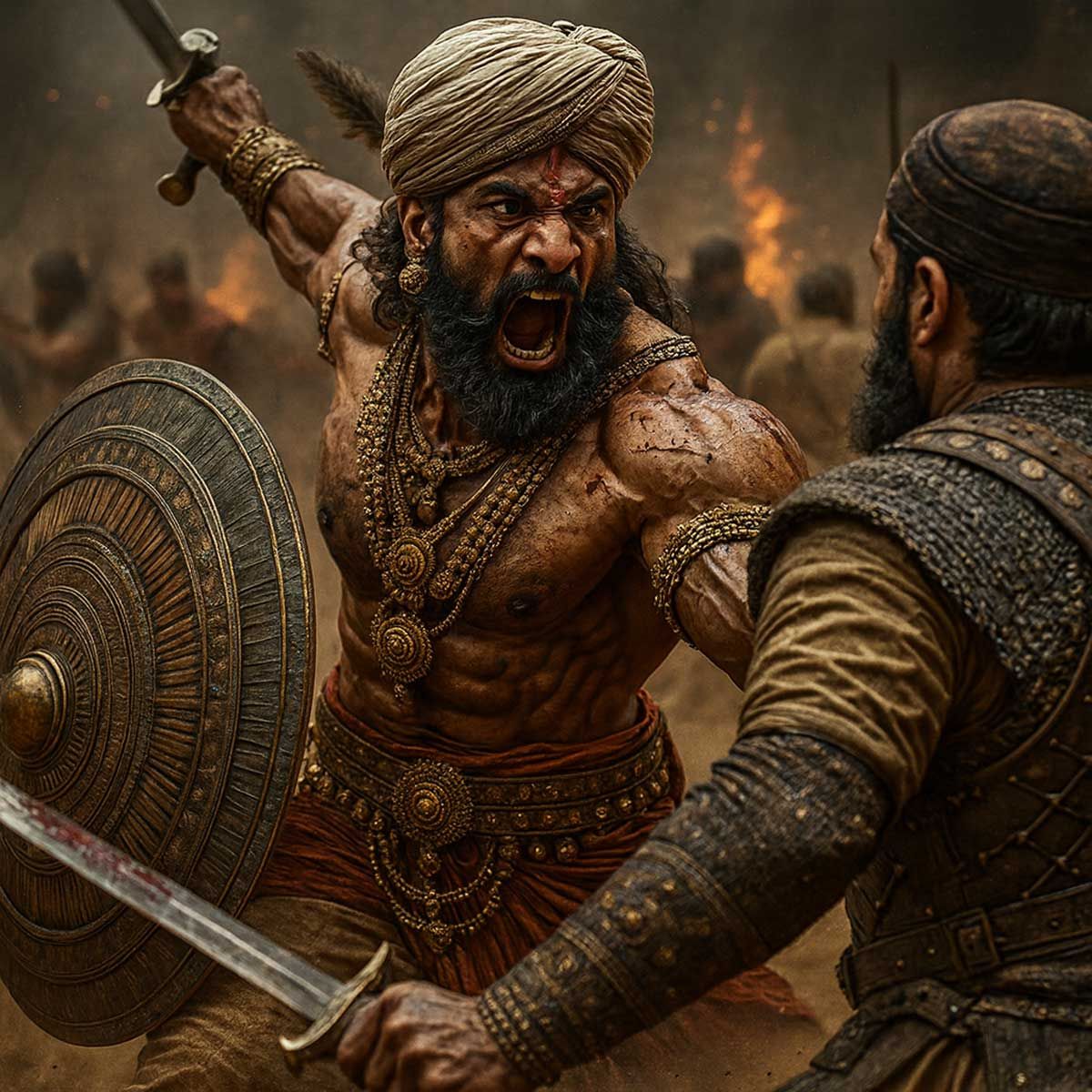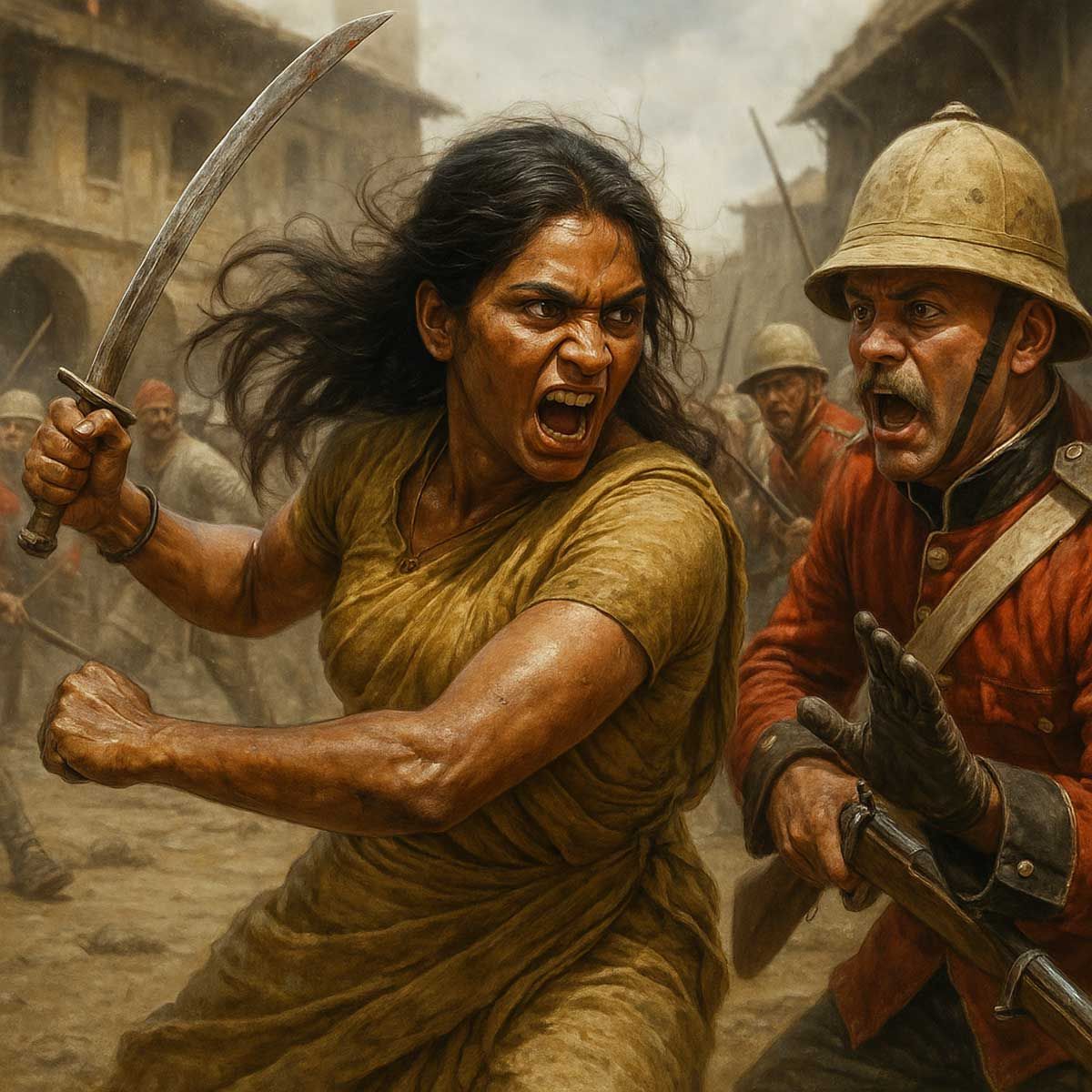More Coverage
Twitter Coverage
Satyaagrah
Written on
Satyaagrah
Written on
Satyaagrah
Written on
Satyaagrah
Written on
Satyaagrah
Written on
Join Satyaagrah Social Media
Dangers of losing our identity: Guru Tegh Bahadur forgotten and Aurangzeb being glorified

Guru Tegh Bahadur Martyrdom Day, also known as Shaheedi Diwas is observed annually on 24 November. People across the country pay their homage to the ninth of ten Sikh Gurus, who was fierce supporters of religious freedom, on this day. The day marks the death anniversary of the ninth Sikh Guru.
It is almost surprising that the anniversary of Guru Tegh Bahadur’s martyrdom came and went with an eerie silence, without creating so much as a whiff as opposed to the stir that can be usually seen on, say, anniversaries of prominent politicians’ assassinations. I say ‘almost’, because after all, whether one would feel surprised by such oversight or not depends on which narrative of Indian history one swears by, right? ‘Surprising’, as a qualifier of the unfortunate fact stated above, would be contested and hotly debated by many Indians in our present-day discourses. Hence other qualifiers like ‘almost’ become indispensable when one decides to make an observation about the current behaviour of the mainstream, especially English, media regarding its coverage of things that are predicated on the past – even on such crucial junctures of the course of the Indic Civilisation’s history as this.
|
But the present exercise makes no mystery of its stand on the issue. By using yet another qualifier, viz. ‘unfortunate’, in classifying the fact of shrouding the ninth Guru’s martyrdom with ‘eerie silence’, we think we have made it sufficiently clear which side of the narrative we are on.
Characterisation of strange, surprising or hilarious things as strange, surprising or hilarious apparently creates some serious confusion in the minds of those who have to bear the brunt of getting uprooted from their soil. Not only do such individuals express cynicism about their ancestry, they even go so far as to question the tangibility of the very earth they have been standing upon all these years. But figurative expressions and euphemisms can take us only so far, and thus we are forced to reiterate a (rather short) primer on the pressing need for thorough decolonisation of historiography before we can get to the subject at hand.
Confusions of the sort indicated above are of course to be expected as long as one lives the reality of a self-doubting (and often self-loathing) republic which, at the time of its modern, disfigured, and traumatised caesarean delivery, had tried its best to pretend that it comes out with a ‘clean slate’ as far as its past was concerned. Its leaders and its institutions tried to be rid of the obvious open wounds that had been inflicted upon it by invaders and fanatic murderous cults. That sort of exercise inevitably leads to distortion of facts as revealed to those who have lived those experiences of invasion, plunder, desecration and genocide. Instead of listening to and speaking from the experience of the persecuted, the sanitizers attempted to instil guilt into their psyche – guilt for persisting to live with their uniqueness, guilt for having an obstinate survival instinct, guilt for not allowing themselves to be assimilated to the cult of the universal homogeneity.
And thus, for its ‘official’ account of history, the new-born republic had readily embraced a historical narrative that was manufactured by the very people who had sought to conquer, crush and obliterate the civilisation of which it was but a mutilated fragment. Of course, that narrative was conveniently sanitised of aberrations so as to brush all such historical events, along with their old and new narrations, under the carpet that held the potential to embarrass the inexplicably self-destructive political programme of the regime of the time. This is why figures such as A.L. Basham and D.D. Kosambi became luminaries of Indian historiography, while an R.C. Majumdar or a Will Durant was treated like an academic pariah, their books pushed out of the reading list of university courses in Indian History. Perhaps the only explanation for such suicidal narrative-building programme is that it sought to accomplish the “unfinished agenda of the partition” of the Indian Subcontinent in a roundabout, long-term manner. The sad truth is that the programme has so far been largely successful. ‘Sad’: there you have another contentious qualifier.
 |
Why would Guru Tegh Bahadur’s martyrdom qualify as a crucial juncture in the course of the Indic Civilizational history
For several reasons; but primarily because it was the one event which truly signalled the beginning of the end of the high and mighty Mughal imperialism. Some of the other equally significant reasons for considering the events of this fateful day in the winter of 1675 as far-reaching are as follows: it was a turning point in the sociocultural history of a most illustrious Indic community, viz. the Sikh community, which stands out in the early modern history of the Indian Subcontinent on account of its unparalleled sacrifices and an empire swiftly built on those sacrifices.
Guru Tegh Bahadur happened to be the ninth, i.e. the penultimate guru of the Sikh people. In his time he was the spiritual guide for the Sikh community and a father figure rolled into one, someone who was approached by people from not just the Sikh community but also from other Indic communities for counsel and help.
One needs to keep in mind that this was a particularly difficult period for all Indic communities – the people of dharma – as they were being mercilessly persecuted by the fanatic Mughal emperor Aurangzeb, who took sadistic pleasure in desecrating and destroying Hindu temples. The expression ‘people of dharma’ is being used to refer to Hindus, Buddhists, Jains and Sikhs: communities whose worldviews share a considerable amount of common ground, often fundamentally so, and not just in their particulars. Anyway, the Sikh tradition informs us that it was Guru Tegh Bahadur’s nine-year-old son Gobind – who would soon be forced by the tragic but paradigmatic turn of events to assume the role of the tenth Guru – counselled his father to make the supreme sacrifice that was needed to defend the people of dharma. That child would eventually become Guru Gobind Singh, the tenth Guru of the Sikh people, and more than that, a symbol of resistance against Islamic fanaticism during the Mughal era. He would lead the charge against the atrocious, tyrannical Mughal Empire on behalf of the people of dharma. But that is a saga that needs telling on another occasion. Let’s get our focus back on the ninth Guru.
Here’s an exercise in soul-searching for ourselves: let us try fathoming just how shameful it is for most people in India, especially those belonging to the various aforementioned Indic communities, to forget someone like Guru Tegh Bahadur on that day of the year when he sacrificed his life so that the people of dharma may survive with dignity and freedom. It is like forgetting one’s father who had to lay down his life to ensure a continued dignified existence for his children.
Actually, it is worse – it is equivalent to the egregious act of a denial of the existance one’s late father, turning a blind eye to his memorial and not honouring his sacrifice for the children. That too, for the purpose of appeasing the same bigotry that had such a father slaughtered in the first place – that murdered him in the most undignified of manners for not capitulating to its tyranny; to ensure that the ‘tender’ feelings of those who continue to idolize the Mughal tyrant Aurangzeb are unhurt. Such is the disgraceful misfortune of this republic, which should have been a proud torch-bearer of the great Indic Civilisation instead of being an utter sycophant of tyrannical bigotry it presently is, that it cowers in fear and shame from uttering the name of the very father who had laid down his precious (precious on more than one account – a father as well as a holy man) life to protect his children; the father who had shed his mortal coil so that it can cover his children in a shroud of protection, creating a powerful shield of spiritual force and fatherly affection that may defend his children and their holy habitat from the blows of a barbarous usurper.
|
What was demanded of the ninth and penultimate Guru
That he yield to Aurangzeb’s demand of embracing Islam. The fanatic tyrant specifically demanded him to get converted to Islam because he was convinced that once the famed Guru of Sikhs yields to his unjust demand, his disciples and devotees who had so far been living safely under the Guru’s spiritual and paternal protection would follow suit, for the Guru was indeed a shield of Hind and Hindus – a holy figure who guarded Hind and its inhabitants from all external forces trying to disrupt dharma. Thus, in Aurangzeb’s estimation, the conversion of Guru Tegh Bahadur – his capitulation before Islam – would hasten the Islamization of Hind, and in all probability he was correct.
 |
That Aurangzeb was correct was proven by the martyrdom of Guru Tegh Bahadur, but ironically in inverted order of things. The Guru did not bow down to the pressure and tyranny of the fanatical Mughal emperor, instead, he unflinchingly gave his head. This singular act of the Guru highlighted that the best of the people of dharma would not surrender before non-dharmic tyranny, and it also ensured that the common people of dharma would not have to give in to the Mughal tyrant’s zealous project of proselytization. The Guru not capitulating before the supposedly one true religion meant Aurangzeb’s work would only get tougher. Indeed Aurangzeb had to go to his grave with his dream of Islamizing Hind – a dream he possibly borrowed from the Hadith of “Ghazwatul Hind” – remains largely unfulfilled. Guru Tegh Bahadur had succeeded in protecting dharma in its own land, that of Hind. And thus the Guru became known as Hindi Di Chadar or The Shield of India.
American philosopher Willard Van Orman Quine had once said: “No entity without identity”. This slogan, arising out of investigations into the metaphysics of ‘Being’, is perfectly applicable to our case. As far as the dignified and free existence of Hindus (and all the other Indic communities) is concerned, they can rest assured that there is no true existence for them unless they hold on to their identity, which is unique. Where does one derive their identity from? They may derive it from many sources, but first and foremost it is derived from their parents’, from their long-gone late ancestors’ names and deeds. Sometimes some of those names may reek of ignominy, sometimes some of the deeds of our ancestors may put us to shame. But at most other times, their names and deeds stand for affection, compassion and heroic glory.
If nothing else, the very fact of one’s sheer existence speaks volumes of one’s ancestors’ singular achievement in their struggle for survival and the even harder struggle for ensuring the survival of fragile future generations; of how they faced all odds to ensure that their descendants may live in the unfamiliar times to come. That existence is validated mainly by one’s identity derived from past generations and their memory. This is why people create elaborate genealogies, descriptions of their family tree, and sagas of origin, movement and flourishing. As with the individual, so with the nation. The nation creates its own saga of its great victory over natural and supernatural odds, singing the glory of its forefathers and mothers, and oftentimes they even derive the nation’s name from one such illustrious father. So has been the case with Bhāratavarṣa– the land of the children of the blessed Emperor Bharata.
In the case of Hindus and the other Indic communities, the names of their ancestors are hallowed not only because these Indic communities have managed to survive, with their uniqueness more or less intact, up to this point in time against great odds, but because those ancestors had lived heroically and died heroically. The Indic communities have more reason than one to be proud of their heritage, to bask in the glory of their illustrious ancestors – so much so that that glory outweighs any instance of interruption by the inglorious episodes.
It is of little doubt that an individual, who is hesitant of taking her father’s name in solemn remembrance of the action of laying down his life for his children’s sake, is in denial of her own identity. In other words, she is depriving herself of her identity, which is her most natural birthright – an inheritance that no one could possibly rob her off, except for herself. Through that self-destructive, self-denying process, she ends up being a person without an identity. Worse, she loses the personhood, too, for complete personhood implies free agency. As soon as one foregoes her identity, a nihilistic void is created in and around that individual. Another stronger entity may then find it easy to step in and fill that void; and drive the former individual with the new, different and replaced outside agency, essentially turning the individual into a slave. That is the danger of losing one’s identity, which is most intimately predicated upon memory. Wilfully turning one’s back to subjective as well as collective memory only helps in corroding the basis of identity. And, to requote Quine, no entity without identity.
References:
Opindia.com - Sreejit Datta
 Support Us
Support Us
Satyagraha was born from the heart of our land, with an undying aim to unveil the true essence of Bharat. It seeks to illuminate the hidden tales of our valiant freedom fighters and the rich chronicles that haven't yet sung their complete melody in the mainstream.
While platforms like NDTV and 'The Wire' effortlessly garner funds under the banner of safeguarding democracy, we at Satyagraha walk a different path. Our strength and resonance come from you. In this journey to weave a stronger Bharat, every little contribution amplifies our voice. Let's come together, contribute as you can, and champion the true spirit of our nation.
 |  |  |
| ICICI Bank of Satyaagrah | Razorpay Bank of Satyaagrah | PayPal Bank of Satyaagrah - For International Payments |
If all above doesn't work, then try the LINK below:
Please share the article on other platforms
DISCLAIMER: The author is solely responsible for the views expressed in this article. The author carries the responsibility for citing and/or licensing of images utilized within the text. The website also frequently uses non-commercial images for representational purposes only in line with the article. We are not responsible for the authenticity of such images. If some images have a copyright issue, we request the person/entity to contact us at This email address is being protected from spambots. You need JavaScript enabled to view it. and we will take the necessary actions to resolve the issue.
Related Articles
- How Chhatrapati Shivaji Maharaj was establishing Hindu Samrajya by concluding centuries of Islamic oppression - Historian GB Mehandale destroys secular propaganda against Hindu Samrajya Divas
- Unsung Heroine Pritilata Waddedar, Who Shook The British Raj at the age of 21
- Hindus documented massacres for 1000s of years: Incomplete but indicative History of Attacks on India from 636 AD
- Chronicles of Valour- The Battle of Haldighati
- Godse's speech and analysis of fanaticism of Gandhi: Hindus should never be angry against Muslims
- 21-yr-old girl Bina Das shot Bengal Governor in her convocation programme at Calcutta University, got Padma Shri but died in penury
- Prophecies of Jogendra Nath Mandal getting real after seventy years of his return from Pakistan
- The Islamic Doctrine of Permanent War: Jihãd and Religious Riot
- Our first true war of independence lie forgotten within the fog of time and tomes of propaganda: Sanyasi Rebellion, when "renouncers of the material world" lead peasants in revolt against British and fundamentalist islamic clans
- Freedom struggle of Gurjars against Britishers at Koonja in 1824: 100s of Gurjars Martyred and 100s Hung in Single Tree
- Moplah Genocide of the Malabar Hindus, 1921: Thousands of Hindus slaughtered
- 26th December to be observed as Veer Baal Diwas to pay gratitude to martyr sons of Guru Gobind Singh: PM Modi
- On 16th Aug 1946, during Ramzan's 18th day, Direct Action Day aimed to provoke Muslims by mirroring Prophet Muhammad's victory at Badr, Gopal 'Patha', the Lion of Bengal, heroically saved Bengali Hindus & Calcutta from a planned genocide, altering history
- Busting the myth of “glories” of the Mughal Empire and its economic superiority as fantasized by Indian Marxist and Liberal historians
- Tirot Singh: An Unsung Hero of the Khasi Tribe who destroyed British with his skill at Guerrilla Warfare
























